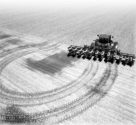What I've Learned from No-Tilling
Cover Crops Offer Big Yield Boosts If Done Correrctly
No-tillers can find success by committing to, selecting and buying their seed early, planting early and controlling the cover crop early and thoroughly the following spring.
Read More













